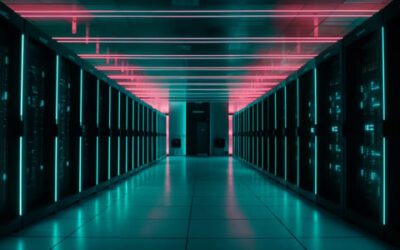[dsm_gradient_text gradient_text="Your AI Ready for the Future? Inside the New AI Maturity Model" _builder_version="4.27.0" _module_preset="default" header_font="Questrial|||on|||||" header_text_align="center" header_letter_spacing="5px" filter_hue_rotate="100deg"...
AI-Driven Green Product Innovation: Unlocking Sustainable Value through Organizational Capital
Imagine a world where every product you buy — from the shampoo in your shower to the phone in your hand — is designed not just for convenience and performance, but also with the planet in mind. That’s the promise of green product innovation — creating goods that are kinder to the environment throughout their lifecycle, from design to disposal.

Now, imagine if we could speed up this process by giving companies a superpower — the ability to analyze mountains of data, predict outcomes, test designs virtually, and make smarter decisions in real time. That’s exactly what Artificial Intelligence (AI) brings to the table.
In recent years, there’s been a global push to fight climate change and reduce our environmental footprint. Governments are setting ambitious targets, consumers are demanding greener choices, and businesses are feeling the pressure to adapt. But going green isn’t easy — it requires creativity, investment, and a deep understanding of both technology and sustainability. That’s where AI enters the scene.
This blog post explores a fascinating idea: can AI help companies create more eco-friendly products — and what role does a company’s internal brainpower play in making that happen? A new research study by Ying Ying and Shanyue Jin (2024) looked at thousands of Chinese companies over a 10-year period and found that AI can, indeed, drive green innovation. But there’s a twist: it works best when companies have strong leadership and well-educated, skilled employees.
In this post, we’ll break down that research into simple terms. We’ll also zoom out to see what other experts are saying, peek into real-world examples from companies like Unilever, and look at how AI is shaping the green future of business.
Whether you’re an entrepreneur, a curious citizen, or someone wondering how tech and sustainability can work together — this is for you.
Let’s dive in and explore how AI is becoming a secret weapon for a greener world.
What Is Green Product Innovation (And Why Should You Care)?
Let’s start with a simple question: what makes a product green?
It’s not just about putting a leaf on the label or calling it eco-friendly. A green product is one that is designed to reduce harm to the environment — during its production, use, and even when you throw it away.
Think about this:
- A shampoo bottle made from recycled plastic.
- A car that runs on electricity instead of gas.
- A light bulb that uses less energy but lasts longer.
Now, when companies create new products like these, or improve old ones to make them more sustainable, that’s called Green Product Innovation (GPDI).
Why Is This Important?
Because traditional manufacturing often hurts the planet. Think of:
- Toxic chemicals polluting rivers.
- Massive energy use from fossil fuels.
- Piles of waste ending up in landfills.
Green innovation flips this script. It focuses on:
- Using safer, renewable materials.
- Saving energy and water.
- Creating less waste and pollution.
And guess what? It doesn’t just help the Earth — it helps businesses too. Studies show that companies that invest in green products can:
- Cut costs in the long run (like lower energy bills).
- Attract loyal customers who care about sustainability.
- Stand out from the competition by being future-ready.
In short, green innovation is not just good for the planet — it’s good business.
Green Product vs. Green Process
You might hear two similar terms tossed around:
-
Green Process Innovation – Making the manufacturing process more eco-friendly (like using solar panels in the factory).
-
Green Product Innovation – Making the product itself more sustainable (like using biodegradable packaging).
While both are important, the product is what customers actually interact with. So improving it can make a big impression — and doesn’t always require huge investments or years of development.
That’s why many companies start with green product innovation. It’s faster, more visible, and can deliver environmental benefits right away.
But What Drives Companies to Go Green?
It’s not just because they suddenly care about trees. There are real pressures and motivations:
- Customers asking for greener options.
- Governments setting stricter environmental rules.
- Investors and media watching how responsible companies are.
And now, there’s a new force entering the picture: digital technology, especially Artificial Intelligence.
In the next section, we’ll look at how AI is becoming a game-changer for green product innovation — helping companies design, test, and deliver greener products faster and smarter than ever before.
Let’s see how it works!
How Artificial Intelligence Is Supercharging Green Product Innovation
Let’s be honest — when you hear the words Artificial Intelligence or AI, what comes to mind?
Maybe robots, smart assistants like Siri or Alexa, or even self-driving cars.
But what if we told you that AI can also help create eco-friendly shampoo bottles, energy-saving home appliances, or clothes made with less waste?
That’s the power of AI in Green Product Innovation (GPDI). It’s not just about making machines smarter — it’s about helping companies make greener, smarter decisions.
So, What Exactly Is AI?
In simple terms, AI is like giving a computer a brain. It allows machines to:
- Learn from data,
- Spot patterns,
- Make decisions,
- And even predict outcomes.
Imagine if a computer could scan through years of environmental research, customer preferences, and product designs in seconds — and suggest how to make a product more sustainable. That’s what AI can do.
How AI Helps Create Greener Products
Let’s break it down with a few real-life examples:
1. Smarter Product Design
AI can simulate how a product will perform before it’s even made. Want to know if that new biodegradable packaging will hold up in the rain? AI can test that digitally — saving time, money, and materials.
2. Using Less Energy and Materials
By analyzing data from past production runs, AI can suggest ways to use fewer raw materials or less energy without sacrificing quality. Think: lighter car parts, more efficient batteries, or less plastic in packaging.
3. Discovering Greener Alternatives
AI can search massive databases to find non-toxic or renewable materials that can replace harmful ones. For example, it might recommend using mushroom-based leather instead of real animal hide.
4. Personalized, Sustainable Choices
Companies like Amazon and IKEA are using AI to recommend products based on your preferences. Now imagine adding sustainability filters — like showing only low-carbon or recyclable products.
What Makes AI So Powerful for Green Innovation?
Unlike traditional tools, AI learns and improves over time. The more data it has, the better it gets. This makes it a perfect match for green innovation, which often involves:
- Complex trade-offs (like cost vs. environmental impact),
- Fast-changing regulations,
- And growing consumer expectations.
With AI, companies don’t have to guess — they can use real insights to guide their decisions.
Who’s Using AI for Green Innovation Already?
Here are some cool examples:
- Unilever applies AI to find more sustainable ingredients for its beauty and food products.
- Siemens uses AI-driven digital twins (virtual versions of real-world products) to test green designs without building physical prototypes.
These are just the tip of the iceberg. More and more companies, big and small, are jumping on board.
Teamwork Makes It Work
But here’s the catch: AI doesn’t work in a vacuum. It needs the right people — engineers, designers, data analysts, and even factory workers — to understand, trust, and use the insights it provides.
That’s where a company’s “organizational capital” comes in — basically, the brainpower and teamwork behind the scenes. We’ll explore this in more detail later on, but for now, just remember: AI is the tool, but people make it powerful.
%
Energy Efficiency in Data Centers
Google reported that using AI to manage its data centers resulted in a 30% reduction in energy used for cooling, making their operations significantly more energy-efficient and lowering their environmental impact. Source: Google Sustainability Blog.
%
ESG Reports Will Use AI for Analysis
Gartner predicts that by 2026, 90% of environmental, social, and governance (ESG) reporting will be supported or automated by AI-powered tools, as companies struggle to keep up with growing data and regulatory requirements. Source: Gartner (2022). Market Guide for ESG Reporting and Data Management Software.
Why Some Companies Go Green (and Others Struggle): The Theories Behind Innovation
Okay, we’ve seen that AI can help companies create greener products — and we’ve looked at some cool real-world examples.
But here’s a big question:
Why do some companies succeed with green innovation using AI… while others barely make progress?
To answer that, we need to peek into the minds of business researchers. Don’t worry — we’re not diving into heavy academic stuff. But there are two powerful ideas that help explain this difference:
- The Resource-Based View (RBV)
- Dynamic Capability Theory (DCT)
Let’s break them down using everyday language.
The Resource-Based View (RBV): What You Have Matters
This theory says that a company’s success depends on the resources it has — and how well it uses them.
Think of resources like:
- Talented people
- Smart technologies
- Strong leadership
- Brand reputation
Some companies have rare and valuable resources that give them a competitive edge. For example:
- A team of expert designers who know how to make sustainable products.
- Access to cutting-edge AI tools.
- A reputation for being eco-conscious that attracts loyal customers.
According to RBV, companies that already have strong resources are better equipped to innovate — including in green ways.
So when AI comes into the picture, these companies are ready to roll. They can take that technology and turn it into real-world results — like new eco-friendly products or packaging made from seaweed.
Dynamic Capability Theory (DCT): It’s Not Just What You Have — It’s What You Can DO With It
Here’s where it gets interesting.
Having great resources is awesome. But things change — fast. New laws, new tech, new customer demands. A company has to be able to adapt.
That’s where Dynamic Capability Theory comes in.
This idea says that successful companies don’t just have resources — they know how to:
- Spot new opportunities
- Rearrange and upgrade their tools
- Keep learning and improving
So let’s say a company has a basic AI tool and a small innovation team. If they’re flexible and open to change, they can still pivot, upgrade, and create green solutions. That’s dynamic capability.
How These Theories Help Us Understand AI and Green Innovation
Let’s connect the dots:
- RBV explains why some companies are already in a strong position to use AI for green innovation — because they’ve got the people, tools, and mindset.
- DCT explains how even companies that aren’t there yet can still succeed — if they’re willing to learn, grow, and adapt.
Together, these theories show us that green innovation isn’t just about technology. It’s also about the people, culture, and strategy inside a company.
This is why AI doesn’t magically make every company greener overnight. It needs to be supported by:
- Knowledgeable teams
- Strong leadership
- A willingness to evolve
And that brings us to our next big topic: organizational capital — the hidden power behind how companies operate, collaborate, and innovate.
Organizational Capital: The Hidden Power Behind Innovation
We’ve talked about how AI can help companies go green, and we’ve seen that success also depends on a company’s ability to adapt and use its resources wisely.
But here’s something that doesn’t get talked about enough — and it’s super important:
Even the best technology won’t work if the people using it aren’t ready.
That’s where something called organizational capital comes in.
Don’t let the term scare you off. It might sound like something from a business textbook, but it’s really about one big idea:
Organizational capital = the brainpower, teamwork, and structure that keep a company running well.
It’s the soft stuff — like experience, trust, knowledge, skills, and relationships — that makes the hard stuff (like machines and AI tools) actually useful.
Let’s break it down.
1. Employee Human Capital (EHC)
This is all about the knowledge and skills of the employees.
Imagine a company introducing a new AI tool to help design eco-friendly packaging. If the employees:
- Don’t understand how it works,
- Don’t trust the results,
- Or don’t have the right skills to use it…
Well, the tool won’t do much good, right?
But if the company has trained, curious, and capable staff — they’ll embrace the technology, use it effectively, and come up with great ideas for green products.
Bottom line: Smart, well-trained employees = better innovation.
2. Board Human Capital (BHC)
This refers to the education and expertise of the company’s leaders, especially the board of directors.
Why does this matter?
Because these are the people who make the big decisions:
- Should we invest in AI?
- Should we redesign our products to be more sustainable?
- Should we take the risk of launching a new green product?
If the board is made up of people with strong backgrounds in science, technology, or sustainability, they’re more likely to:
- Understand the potential of AI,
- Make bold decisions,
- And lead the company in a greener direction.
Bottom line: The smarter and more experienced the leadership, the more likely green innovation will succeed.
3. Board Social Capital (BSC)
This one’s a little tricky.
Social capital means the networks and relationships that leaders have with people outside the company — like other business leaders, politicians, or experts.
This can be a good thing — these connections might bring in useful ideas or partnerships.
But here’s the twist:
If board members are stretched too thin — sitting on boards of five or six companies, attending too many meetings, chasing their own interests — they might not give their full attention to the company’s green goals.
Some studies show that when boards are “too busy,” innovation slows down. Important decisions get delayed, or the company plays it safe instead of taking bold steps.
Bottom line: Strong networks can help — but only if the board stays focused and committed.
So, Why Does Organizational Capital Matter for AI and Green Innovation?
Because at the end of the day, AI is a tool. Whether it’s used to its full potential depends on:
- Who’s using it,
- How well they understand it,
- And whether the company’s structure supports it.
The research we’re talking about found that:
- AI works best in companies where employees are skilled and educated.
- It works even better when the board has strong technical and professional experience.
- But the effect is weakened when board members are too distracted or disconnected.
What the Research Reveals — AI, Green Products, and Company Culture
The Big Question:
Can artificial intelligence actually help companies make greener products?
The Answer: Yes!
The research clearly showed that companies using AI were more likely to succeed in green product innovation. These were companies that:
- Designed better, more eco-friendly products,
- Reduced waste and pollution,
- And made smarter decisions during development.
But — and here’s the important part — AI didn’t work equally well for everyone.
What Made the Difference?
The study found three key “people power” factors that changed how effective AI was:
1. Strong Leadership (Board Human Capital)
Companies with experienced, educated boards of directors saw the biggest benefits. These leaders knew how to:
- Understand new technology,
- Take smart risks,
- And guide their teams toward sustainability.
In other words, when the top of the company was sharp and strategic, AI had the biggest impact.
2. Skilled Employees (Employee Human Capital)
The companies that had well-trained, knowledgeable workers also did much better. These employees:
- Embraced new tools like AI,
- Came up with green ideas,
- And helped bring those ideas to life.
Even if the company didn’t have a big budget, smart employees helped fill the gap.
3. Distracted Boards (Too Much Social Capital)
Here’s the surprise twist: Some companies had board members with tons of outside connections — they sat on multiple boards, had political ties, or were very involved in other businesses.
You’d think that would be helpful, right?
But in many cases, it actually hurt green innovation. These busy board members were often:
- Less focused,
- Slower to make decisions,
- And more likely to prioritize other interests.
The study found that too much social capital at the top can actually block the success of AI in driving green change.
Real-World Examples of AI + Green Innovation
We’ve talked a lot about how AI can help companies create greener products. But let’s bring it to life with some real examples.
These aren’t just theories — companies around the world are already using AI to make the planet cleaner, one product at a time.
Let’s take a tour of some innovation superheroes
Unilever: Greener Soaps, Smarter Systems
Unilever makes a ton of household products — from Dove soap to Hellmann’s mayo. But did you know they’re also leaders in green innovation? Here’s what they’re doing with AI:
- They use AI to analyze ingredients, looking for more sustainable options (like plant-based or biodegradable materials).
- AI helps them predict consumer trends, so they can design products that are both eco-friendly and popular.
- Their factories use AI to reduce water and energy use during production.
One of their proudest moments? Reducing the carbon footprint of their laundry detergents by designing a formula that works just as well in cold water — and AI helped make it happen!

Siemens: Digital Twins and Clean Machines
Siemens is a big player in the tech and industrial world, and they’re doing something very cool: creating digital twins.
Wait, what?
A digital twin is a virtual version of a real-world product or system — like a 3D simulation. Siemens uses AI to:
- Test green product designs digitally before they build them,
- Find energy leaks or material waste in a product or machine,
- Optimize manufacturing processes in real-time.
This saves resources and avoids waste before a product is even made. It’s like rehearsing before the big performance — only with machines and sustainability.
Adidas: Sustainable Sneakers, Powered by AI
You might not think about AI when you put on your sneakers — but Adidas sure does. They’ve used AI to:
- Create shoes from recycled ocean plastic,
- Design sneakers that are easier to recycle after use,
- And reduce waste by using 3D printing guided by AI algorithms.
The result? Stylish, performance-driven shoes that also help clean up the planet.

Coca-Cola: Smarter Bottles, Greener Strategy
Coca-Cola has been under pressure to reduce plastic waste — and they’re turning to AI for help. Here’s how:
- AI tracks bottle return and recycling rates across different regions.
- It analyzes customer behavior to design labels and packaging that encourage recycling.
- AI also helps create plant-based packaging that’s compostable or easier to recycle.
Their goal? A World Without Waste by 2030 — and AI is a key tool in the mission.
What Do All These Companies Have in Common?
Besides being household names, these companies:
- Embrace AI not just for efficiency, but to build more sustainable products and processes.
- Invest in people and teams who understand both tech and the environment.
- See sustainability not as a burden, but as a business opportunity.
Takeaway for Everyone (Not Just Big Corporations)
You might be thinking: “That’s great for giant companies with big budgets. But what about smaller businesses?”
Good news — AI tools are becoming more accessible, even for startups and small businesses. With cloud platforms, open-source software, and online training, more companies than ever can:
- Analyze data,
- Track sustainability goals,
- And start innovating green — one step at a time.
It’s not about doing everything perfectly from the start. It’s about starting smart and growing green.
AI Tools That Help Build Greener Products
We’ve seen how big companies are using Artificial Intelligence (AI) to make their products more sustainable — but how exactly do they do it? Is there a magical green button in their computers?
Well… not quite.
But there are powerful AI tools that companies can use to design, test, and improve greener products — and many of these tools are becoming more available to companies of all sizes.
Let’s explore some of the most useful types of AI tools helping businesses turn sustainability into reality.
1. Natural Language Processing (NLP): Turning Words into Action
NLP is a fancy way of saying: “AI that understands human language.”
Here’s how it helps with green innovation:
- Reading reports and research papers: AI can go through thousands of documents to find the best sustainable materials or energy-saving techniques.
- Scanning customer feedback: Companies can understand what eco-friendly features people actually want.
- Analyzing company sustainability reports (CSR): NLP can “read” what companies are doing and compare it to others — helping them improve.
Real-world use: Some companies use NLP to scan environmental regulations and make sure their new products meet green standards. This saves time and avoids mistakes.
2. Machine Learning: Learning from Data to Make Better Decisions
Machine learning is like giving AI a giant pile of data — and letting it figure out what works and what doesn’t.
In green innovation, this is a game-changer:
- Finding patterns in how products perform over time.
- Predicting which designs will use the least energy or materials.
- Optimizing supply chains to reduce carbon emissions.
Example: A company could use machine learning to predict how long a new eco-friendly battery will last — and adjust the design before making thousands of them.
3. Digital Twins: Virtual Products with Real-World Insights
Imagine creating a virtual version of a product before building it — like a video game simulation for real-world stuff.
That’s what digital twins are all about. They allow companies to:
- Test out product ideas without using actual materials,
- See how products react in different environments (heat, cold, water),
- Detect flaws or inefficiencies — before it’s too late.
Real-world use: Engineers use digital twins to create energy-efficient motors, packaging, or appliances — all without making a single physical prototype.
4. Generative AI: Creating New Ideas, Fast
You’ve probably heard of tools like ChatGPT or image generators like DALL·E.
These are part of a newer type of AI called generative AI, which means it can actually create new content — words, images, designs — based on what you ask it.
Businesses are now using generative AI to:
- Come up with ideas for sustainable product designs,
- Write marketing content about eco-friendly products,
- Generate reports on environmental performance.
Fun fact: Designers can describe a material (biodegradable, plant-based, strong) and have AI suggest product shapes, colors, or features — instantly.
5. AI-Powered Energy Management Tools
Companies don’t just want to make greener products — they want to use less energy while doing it. AI tools can now:
- Monitor energy use in real time,
- Suggest ways to cut down electricity, water, or heating,
- Schedule machines to run when energy demand is low (and cleaner).
Real-world use: A small factory might use AI to reduce energy bills and carbon emissions — just by shifting machine usage to off-peak hours.
6. AI for Supply Chain Optimization
Products aren’t made in a vacuum. They require:
- Raw materials,
- Shipping and packaging,
- Manufacturing partners.
AI helps companies choose the greenest, most efficient paths for all of this. For example, it can:
- Pick suppliers who use sustainable practices,
- Plan delivery routes to use less fuel,
- Choose packaging materials with less environmental impact.
Real-world use: AI helped one company reduce its delivery fleet’s carbon footprint by 20% just by optimizing delivery routes.
Can Small Businesses Use These Tools?
Absolutely! Thanks to cloud services (like Google Cloud, Amazon Web Services, or Microsoft Azure), small and medium-sized businesses can now:
- Access powerful AI tools online,
- Use free or low-cost software,
- And even build custom AI solutions with minimal coding experience.
There are also plenty of open-source tools (like TensorFlow, PyTorch, and Hugging Face) that allow businesses to explore AI without huge investments.
Final Thoughts: The Tools Are Here — Are We Ready to Use Them?
AI can be complicated under the hood — but its power lies in how we apply it.
Whether it’s a global brand like Nike or a small soap company trying to cut down plastic, AI offers tools to dream, design, and deliver greener products.
But tools are only part of the equation. To make the most of them, companies need:
- Curiosity
- Training
- And a culture that cares about the environment
In the next section, we’ll zoom out and look at the bigger picture: What’s happening globally in the world of green tech, digital policies, and how governments are pushing companies to be cleaner and smarter.
Let’s explore the trends shaping our sustainable future!
Global Trends and Policies Driving Digital Sustainability
So far, we’ve talked a lot about what companies are doing with AI to go green. But they’re not doing it alone.
Across the world, governments, global organizations, and everyday people are pushing for a cleaner, smarter, and more sustainable future. And digital tools like AI are playing a huge role in making it happen.
Let’s take a look at the global trends and policies that are shaping the way businesses think about green innovation — and how technology is helping them rise to the challenge.
The Big Picture: The World Is Getting Serious About Sustainability
In the past, being eco-friendly was a nice bonus — something companies did for PR.
Today? It’s becoming non-negotiable. Thanks to:
- Climate change,
- Plastic pollution,
- Rising energy costs,
- And growing public pressure…
…governments are stepping up with stronger environmental rules, and businesses are being expected to do more than just talk — they need to act.
1. The European Green Deal: Going Climate-Neutral
The European Union (EU) has a bold goal: Become the first climate-neutral continent by 2050.
That means:
- Cutting carbon emissions to near zero,
- Promoting renewable energy,
- Creating sustainable products that last longer and waste less.
To do that, the EU is pushing companies to:
- Track and report their environmental impact,
- Use eco-friendly materials,
- And apply technologies (like AI) to reduce waste and emissions.
Many European companies are already using AI to measure their carbon footprints and design greener products — not just because it’s smart, but because it’s becoming the law.
2. China’s Green Tech Push: Innovation at Scale
China is both a global manufacturing powerhouse and one of the biggest polluters — but it’s also making big moves toward green transformation. China has:
- Invested heavily in AI and green technologies,
- Promised to reach carbon neutrality by 2060,
- Encouraged companies to adopt digital tools for sustainability.
In fact, the research study we’ve been exploring (from Section 6) looked at how Chinese companies are already using AI to boost green product innovation — with impressive results.
As one of the biggest AI markets in the world, China is a key player in combining tech + sustainability.
3. The U.S. Climate and Tech Agenda: Clean Innovation
In the U.S., the Inflation Reduction Act (2022) includes massive investments in:
- Clean energy,
- Electric vehicles,
- And climate tech startups.
There’s also growing support for using AI and digital tools to:
- Improve energy efficiency,
- Track emissions from companies,
- And promote green jobs and industries.
AI startups focused on sustainability are now getting major funding — and big companies like Microsoft, Google, and Amazon are investing in clean data centers, electric delivery fleets, and more.
4. The United Nations Sustainable Development Goals (SDGs)
The UN created 17 global goals to help the world become fairer, cleaner, and healthier by 2030.
A few key goals related to our topic:
- Goal 9: Industry, Innovation, and Infrastructure
- Goal 12: Responsible Consumption and Production
- Goal 13: Climate Action
AI is being recognized as a critical enabler to meet these goals — helping track progress, manage resources, and support smarter decision-making.
Example: Some developing countries are using AI to optimize farming (using less water and chemicals), which helps both people and the planet.
5. AI Regulations Are Coming — and That’s a Good Thing
With all this tech power comes a big question:
How do we make sure AI is used responsibly — especially in sustainability?
Governments are starting to create rules and guidelines to make sure:
- AI is ethical and transparent,
- It doesn’t increase inequality,
- And it truly supports green goals — not just corporate profits.
The EU AI Act, for example, is the world’s first major attempt to regulate AI. Other countries are following closely behind.
This means companies will need to be more careful — and more thoughtful — about how they use AI. But it also opens doors for responsible innovation.
Where Is All This Headed?
All signs point in the same direction:
AI is becoming a key tool in the global green movement.
Governments are offering support — and applying pressure — for greener innovation.
People are paying attention and choosing eco-friendly options more than ever before.
And here’s the exciting part: The world is connecting the dots between technology and sustainability in ways we’ve never seen before.
What This Means for Businesses
If you’re a business owner, manager, or even just someone interested in innovation, here’s what to keep in mind:
- Sustainability is no longer optional — it’s part of staying competitive.
- AI can help you get there — faster, smarter, and more cost-effectively.
- Staying up to date on policies and global trends can give you a big advantage.
The message from global leaders is clear:
Build green. Think digital. Act now.
Challenges and Ethical Concerns in AI-Driven Green Innovation
We’ve talked a lot about the exciting possibilities of using AI to create greener products and a more sustainable future.
But let’s be real for a minute:
⚠️ No technology is perfect.
⚠️ And AI is no exception.
Just like fire can warm your house or burn it down, AI can help the planet or cause problems — depending on how we use it.
In this section, we’ll look at the challenges, risks, and ethical questions surrounding AI-powered green innovation. These are important to understand so we can move forward wisely, not just quickly.
1. AI is Smart — But Not Always Right
AI learns from data. But what if that data is:
- Outdated?
- Biased?
- Incomplete?
Then the AI’s decisions could be flawed. For example:
- An AI tool might recommend a material as eco-friendly based on old data — when a newer study shows it’s harmful to marine life.
- Or it might ignore social issues (like poor labor conditions) in favor of focusing only on environmental numbers.
The challenge? AI is only as good as the data we give it — and sometimes, that data can be misleading.
2. AI Itself Has a Carbon Footprint
Here’s a twist: AI is often used to reduce pollution, but training and running AI models takes a lot of energy.
Especially large AI systems (like the ones that power self-driving cars or advanced product simulations) can require:
- Powerful computers,
- Giant data centers,
- And huge amounts of electricity.
Some AI tools use more energy in a year than an entire household.
So we need to make sure that the AI systems we use to go green don’t end up creating new environmental problems.
3. Digital Divide: Not Everyone Has Access
Let’s face it — not every business has the same resources.
Big companies like Google can afford the best AI tools and hire top data scientists. But:
- Smaller companies,
- Startups,
- Or businesses in developing countries…
…might struggle to keep up.
If only a few players can access green tech, we risk leaving others behind — and missing out on brilliant ideas from smaller innovators.
Sustainability should be inclusive, not just for the tech elite.
4. Greenwashing with AI: Making It Look Green Without Being Green
Here’s a sneaky one.
Some companies may use AI to produce glossy reports, fancy packaging, or clever marketing that makes their products look eco-friendly — even if they’re not.
This is called greenwashing — pretending to care about the planet to boost sales.
With AI’s ability to generate persuasive content, greenwashing could get even more sophisticated and harder to detect.
That’s why transparency and independent verification are more important than ever.
5. The Human Element: Fear, Job Loss, and Trust
AI can speed things up — but it can also cause stress in the workplace. Employees might worry:
- Will AI take my job?
- Will I be replaced by a machine?
- I don’t understand this new tech — am I falling behind?
And if employees don’t trust the tools, they may resist using them — no matter how powerful or eco-friendly they are.
The solution? Train, support, and involve people at every step.
After all, AI is a tool — not a replacement for human creativity, care, or wisdom.
6. Ethical Questions: Who’s Responsible When AI Makes a Mistake?
Let’s say an AI tool helps design a green product — but it turns out to be harmful to the environment or health.
Who’s accountable?
- The company?
- The AI developer?
- The data provider?
There’s a growing need for ethical guidelines and clear responsibilities when it comes to AI — especially when it’s used in decisions that affect people and the planet.
Governments, companies, and tech creators need to work together to make sure AI is used responsibly and safely.
What Businesses and Policymakers Can Do: Turning Ideas into Action
By now, we’ve seen how powerful the combination of AI and sustainability can be. But ideas alone don’t change the world — action does. So what can businesses and policymakers actually do to make AI-powered green innovation a reality?
Let’s start with the business world.
No matter how big or small your company is, you don’t have to wait until you’re perfect or have cutting-edge tech. The key is to start somewhere — and start now. Many companies begin with small, manageable goals that lead to big results over time.
For example, businesses can:
- Use AI to analyze product packaging and reduce waste,
- Monitor energy use in real-time to lower electricity bills and emissions,
- Identify trends in customer feedback that point toward more eco-friendly product features.
Even one small win — like switching to greener packaging or optimizing shipping routes — can set the tone for bigger innovations later on.
Of course, none of this works without people. AI tools are only as effective as the team using them. That’s why one of the most important things companies can do is invest in employee training and education. When staff understand how AI works and feel confident using it, they’re much more likely to embrace innovation and contribute their own ideas.
Leadership matters too. Sustainable innovation needs to be part of the company’s core mission, not just a side project. When going green becomes part of how a business thinks, plans, and grows, it leads to smarter decisions across the board.
And companies don’t have to go it alone. In fact, many of the most impactful green innovations come from collaboration. Businesses that partner with suppliers, universities, tech companies, or even competitors can share ideas, combine resources, and move faster together than they could on their own.
Tracking results is another essential step. Thanks to AI, companies can now monitor things like emissions, resource use, and supply chain impact more easily than ever. But those numbers aren’t just for internal reports — they’re a way to build trust with customers, investors, and regulators. People want transparency, and data can deliver it.
So, what does success look like for forward-thinking businesses? In summary:
- Start with a focused, achievable sustainability goal.
- Train your team and involve them in innovation.
- Make green thinking part of your long-term strategy.
- Use data to measure progress and adjust along the way.
- Collaborate with others — innovation doesn’t have to be solo.
Now let’s turn to policymakers, who play a vital role in shaping the environment where green innovation can thrive.
Governments can fuel progress by offering the right kind of support. This could mean providing funding for AI-driven sustainability projects, offering tax breaks for companies reducing their carbon footprint, or helping startups access the tools they need to get off the ground.
They can also invest in education and skills training, ensuring the workforce is ready for jobs in green tech and AI. Schools, universities, and adult training programs all have a role to play in preparing people for this future.
Another essential area is regulation. Businesses need clear rules about what counts as green, how AI should be used responsibly, and how to report environmental data. With fair, transparent policies in place, companies can innovate with confidence — knowing they’re on solid ground.
Policymakers can also lead by example. By using green products in public projects, building eco-friendly infrastructure, and adopting smart technology in government services, they can show that sustainability isn’t just a policy — it’s a priority.
Finally, governments can help connect the dots. Often, the challenge isn’t a lack of ideas — it’s a lack of visibility or access. By funding innovation hubs, running awareness campaigns, and connecting businesses with research institutions, policymakers can help turn good ideas into real-world solutions.
Here’s a quick recap of what policymakers can do:
- Offer incentives and funding for sustainable tech adoption.
- Support training and education in AI and environmental fields.
- Set clear regulations to guide ethical, effective innovation.
- Lead by example in government projects and procurement.
- Build bridges between innovators, researchers, and communities.
When businesses and governments work together, backed by smart tools and strong values, green innovation becomes not just possible — but powerful.
The Future of AI and Green Innovation: Where We’re Headed Next
We’ve journeyed through the world of AI and green product innovation — exploring how it works, why it matters, who’s doing it, and what still needs fixing. Now it’s time to look ahead.
What does the future hold for this powerful combination of smart technology and sustainability? What breakthroughs are just over the horizon? And how do we make sure we’re building a future that’s not only advanced — but fair, ethical, and truly green?
Let’s take a look.
The Rise of Smarter, Greener Products
As AI tools become more accessible and more intelligent, we’ll see a wave of products that are designed with sustainability in mind from day one. Instead of tweaking old products to be “less bad,” companies will use AI to create new ones that are inherently good — for people and the planet.
Imagine clothes that are made from renewable materials and automatically adjust to your body temperature, packaging that dissolves in water after use, or home appliances that learn your habits and cut down your energy use without you lifting a finger.
These aren’t science fiction — prototypes for all of them already exist. The future will bring more of them, made better, faster, and more affordably thanks to AI.
Circular Economy Meets Intelligent Design
One of the biggest shifts coming is toward a circular economy — where products are designed to be reused, repaired, or recycled, instead of thrown away. AI can help make that possible by mapping out full product life cycles and identifying where waste happens.
In the future, your smart devices might tell you when it’s more sustainable to repair something instead of replacing it — and connect you to the closest eco-certified repair shop. Companies will be able to trace every part of a product’s journey, making it easier to reduce impact and close the loop.
We’ll move from a take-make-trash model to a make-use-return model — and AI will be the digital brain powering it.
AI That Understands the Planet — and Acts in Real Time
Right now, AI helps us respond to environmental issues. But in the near future, it will help us predict and prevent them.
Next-generation AI will analyze climate patterns, track pollution in real time, and monitor ecosystems with incredible accuracy. It will guide cities on where to plant trees to cool urban heat, help farmers know exactly when and how much to water their crops, and alert communities to environmental risks before they happen.
AI won’t just be a tool — it’ll become part of our global nervous system, helping humans stay in sync with the Earth’s natural rhythms.
More Ethical, More Transparent AI
We’ve talked about the risks of AI — like bias, greenwashing, or energy waste. But the future brings a strong push toward ethical and responsible AI.
New frameworks and technologies will make AI:
- Easier to understand (“explainable AI”),
- More energy-efficient (“green AI”),
- And less biased or opaque.
Governments, companies, and researchers are already working on ways to ensure that AI serves the public good — not just profit. In the coming years, we’ll likely see AI codes of conduct, sustainability certifications for tech companies, and public audits of AI-driven decisions.
This means a future where people can trust AI to do the right thing, especially when it comes to environmental impact.
Human + AI: A Creative, Green Superteam
Perhaps the most exciting part of the future is that we won’t be replaced by AI — we’ll be enhanced by it.
Designers will brainstorm ideas with AI as their creative partner. Engineers will test hundreds of sustainable materials in minutes using digital simulations. Entrepreneurs will use AI to identify gaps in the green market and launch new solutions quickly.
In this future, AI won’t take over — it will lift us up. It will free people from repetitive tasks so they can focus on big ideas. It will bring more voices into the conversation, from remote farmers to young innovators with a laptop and a dream.
AI and humans working together could create a future that’s not only smarter — but more inclusive, balanced, and hopeful.
The Choice Is Ours
Here’s the truth: none of this is guaranteed.
Technology is a tool. It can be used to help or to harm. To serve the few or benefit the many. To protect the planet — or push it further toward crisis.
The future of AI and green innovation depends on the choices we make today.
Will we build tech that truly serves the Earth and future generations?
Will we put people and the planet at the center of our decisions?
Will we work together across industries, borders, and beliefs to create something better?
These aren’t just questions for CEOs or scientists or politicians. They’re questions for all of us.
Because every time you choose a product, support a company, share an idea, or vote for a policy — you’re shaping the future.
A Greener Tomorrow, Powered by Intelligence and Intention
The road ahead won’t be easy. But it’s full of promise.
Artificial intelligence gives us tools we’ve never had before. Sustainability gives us purpose. And together, they give us a chance — maybe our best chance — to build a world that’s cleaner, fairer, and more resilient.
A world where innovation doesn’t come at the cost of the planet.
A world where technology lifts us up — and nature grounds us.
A world we can be proud to pass on.
Let’s build that future. Together.
Conclusion
Artificial intelligence and green innovation are no longer separate conversations — they’re part of the same future. As the world faces urgent environmental challenges, AI offers powerful tools to rethink how we design, produce, and consume. From smarter packaging to sustainable energy systems, we’re seeing how technology can help us tread more lightly on the planet. But tools alone aren’t enough — people, purpose, and strong leadership make all the difference. The companies that succeed will be those that combine digital intelligence with human values. Governments, too, have a vital role in setting the stage with education, regulation, and investment. Together, we can create systems that are not only more efficient but also more ethical and inclusive. The path won’t always be easy, but the potential is enormous. Our choices today will determine the kind of world we live in tomorrow. It’s time to innovate — not just for progress, but for the planet.
References
- Ying, Y., & Jin, S. (2024). Artificial intelligence and green product innovation: Moderating effect of organizational capital. Heliyon, 10(4), e24046036.
- European Commission. (2019). The European Green Deal.
- United Nations. (2015). Transforming our world: the 2030 Agenda for Sustainable Development.
- U.S. Congress. (2022). Inflation Reduction Act of 2022.
- China State Council. (2020). China’s 14th Five-Year Plan (2021–2025) – Highlights on Green Development.
- McKinsey & Company. (2022). The Green Tech Opportunity: How digital tools can accelerate sustainability.
- World Economic Forum. (2021). Harnessing Artificial Intelligence for the Earth.
- International Energy Agency (IEA). (2023). The Role of AI in Clean Energy Transitions.
- Ellen MacArthur Foundation. (2020). Artificial Intelligence and the Circular Economy.
- MIT Technology Review. (2023). Green AI is the Future of Tech — If We Make It That Way.
- Google Sustainability. (2023). Using AI to reduce energy consumption in data centers.
- Unilever. (2023). AI and sustainability: How technology is powering our green goals.
- Siemens AG. (2023). Sustainability and Digital Twin Technology
- Adidas. (2022). Futurecraft Loop: A 100% Recyclable Performance Shoe.
- Amazon. (2023). Sustainability Report.
Wanna know more? Let's dive in!
Cooling the Future: How AI Makes Data Centers Greener
[dsm_gradient_text gradient_text="Cooling the Future: How AI Makes Data Centers Greener" _builder_version="4.27.0" _module_preset="default" header_font="Questrial|||on|||||" header_text_align="center" header_letter_spacing="5px" filter_hue_rotate="100deg"...
When Cars Became Code: How AI is Redefining Automotive Production
[dsm_gradient_text gradient_text="When Cars Became Code: How AI is Redefining Automotive Production" _builder_version="4.27.0" _module_preset="default" header_font="Questrial|||on|||||" header_text_align="center" header_letter_spacing="5px" filter_hue_rotate="100deg"...
Supercharged Smarts: How AI Is Rewiring Electric Vehicle Batteries
[dsm_gradient_text gradient_text="Supercharged Smarts: How AI Is Rewiring Electric Vehicle Batteries" _builder_version="4.27.0" _module_preset="default" header_font="Questrial|||on|||||" header_text_align="center" header_letter_spacing="5px" filter_hue_rotate="100deg"...
New Zealand 2025
Duration: 2 weeks Cities: Christchurch, Hokitika, Kaikōura, Westport, Te Waipounamu, Nelson, Timaru Miles Travelled: 30 000Traveling through parts of New Zealand’s South Island offers a rich tapestry of history, landscape, and local character that leaves a quiet...
Resolving Die Peel Issues in an Automotive & Aerospace Electronics Manufacturing Plant
Background A global electronics manufacturer supplying critical components to the automotive and aerospace industries received multiple customer complaints regarding the premature failure of transistor-based power modules. Field analysis revealed that the root cause...
Transforming a Dysfunctional Quality Team in Automotive and Aerospace Manufacturing
Background The quality department of a Tier-1 manufacturer in the automotive and aerospace sectors was expected to ensure strict compliance to both customer and regulatory standards. Instead, it became a bottleneck plagued by poor collaboration, low morale, and high...
Resolving Customer Complaints Related to Electrical Connector Module Failures
Background ElectroTech, a manufacturer of electrical distribution components, including connector modules for power systems, received a major customer complaint regarding intermittent connection failures in one of its core electric product lines. The failures led to...
Singapore 2019
Duration: 3 days Cities: Singapore Miles Travelled: 6,300Visiting Singapore was like stepping into the future while still being surrounded by rich history and culture. From the moment I arrived at Changi Airport, with its indoor waterfalls and lush gardens, I knew...
Hawaii 2015
Duration: 2 weeks Cities: Honolulu Miles Travelled: 7,000Our trip to Hawaii was truly a once-in-a-lifetime experience, filled with breathtaking landscapes, warm hospitality, and unforgettable moments. We stayed in Honolulu on the island of Oahu, where the vibrant mix...
North East England 2024
Duration: 2 weeks Cities: Durham, Beamish Miles Travelled: 200Traveling to North East England offers a unique blend of history, culture, and character that stays with you long after you leave. One of the highlights is the enchanting city of Durham. Its cobbled streets...
Japan 2019
Duration: 2 weeks Cities: Osaka, Tokyo, Hiroshima, Kyoto Miles Travelled: 9,000Japan in spring is pure magic. Spring felt like a moment suspended in time. The cherry blossoms were at their peak, casting a soft pink glow over temple roofs and narrow cobblestone lanes....












